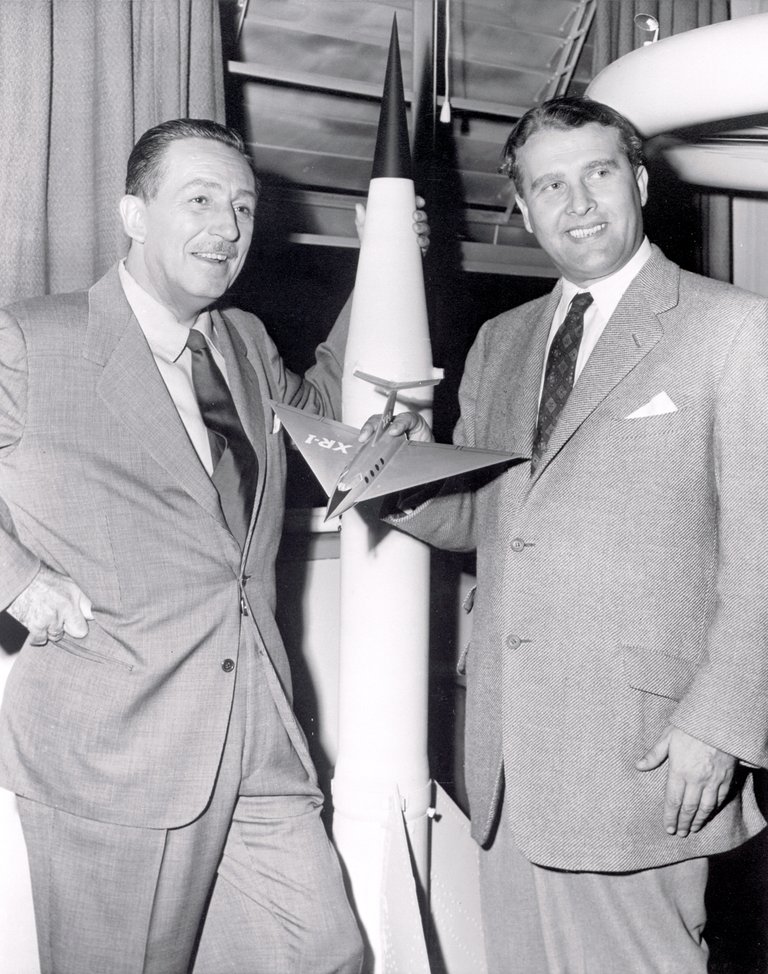.jpg)
In the final days of the Second World War, U.S. forces were in a mad rush to find and recruit German scientists, before the Soviets could scoop them up first. Operation Paperclip (originally "Operation Overcast") was conducted by the newly formed Joint Intelligence Objectives Agency (JIOA) in an effort to secure experts in weapons and aviation technology. The Soviet Union had a similar effort called Operation Osoavikhim, which was not so much a recruitment as an armed kidnapping of about 2,200 German scientists, all in one night in October of 1946.
The JIOA managed to interview and recruit over 1,600 specialists in various fields of study between 1945 and 1959. The most famous was Werhner von Braun, who had helped develop the deadly German V-2 rocket. When the loss of Nazi Germany became imminent, von Braun, while recovering from a recent car crash, had two trusted aides hide his classified V-2 documents in an abandoned mine. Once Hitler's death was announced, he sent his brother, Magnuss, to negotiate their surrender with U.S. soldiers posted nearby (pictured above, Werhner in cast). He was transferred to Fort Bliss, Texas, and eventually to Huntsville, Alabama, where he developed the Redstone rocket and the Jupiter-C rocket (which launched the Explorer 1 satellite). He later became the architect of the Saturn V rocket, which launched the Apollo 11 space flight to the first moon landing in 1969. Von Braun was both a visionary and ambassador for the American Space Race in the 1950's and 1960's. He wrote extensively of his ideas about space travel and even directed and appeared with Walt Disney in three educational films about space exploration. The first aired on television in March of 1955 (pictured below).

The problem? Werhner von Braun had been a member of the Nazi Party, and his V-2 rocket factory in Germany had been staffed with slave labor from the Nordhausen-Dora concentration camp.
Von Braun's past was problematic, but other scientists from Operation Paperclip were even more controversial. Chemist Otto Ambrose discovered sarin gas and worked for IG Farben (producer of Zyclon-B) before working for the U.S. Department of Energy. Aircraft engineer Emil Salmon burned down a synagogue in Germany before being hired by the U.S. Army Air Forces. Dr. Theodore Benzinger, Dr. Siegfried Ruff, Dr. Konrad Schaffer,and Dr. Oskar Schroder oversaw medical experiments on human victims. Dr. Hubertus Strughold, later known as the Father of Space Medicine, was implicated in war crimes against Dachau inmates.
So why would the United States seek out and hire these people? In part, they were considered "intellectual reparations." In other words, Germany owed their technical knowledge to the Allies, to help make up for the destruction wreaked in WWII. Secondly, these scientists had highly specialized expertise in areas like aviation technology, chemical weapons, and biological warfare that the U.S. wanted to keep out of Soviet hands, lest they be used to kill Americans.
Not all of the scientists under Operation Paperclip were war criminals, but the legacy of their contributions is decidedly mixed. The moon landing, the space suit, and the ear thermometer came from Paperclip Scientists, but so did the CIA's LSD experiments and Agent Orange. In a world with only two superpowers, Operation Paperclip was the first of many zero-sum games.
*Inspired by "Operation Paperclip", by Annie Jacobsen, 2014, New York: Little, Brown and Company